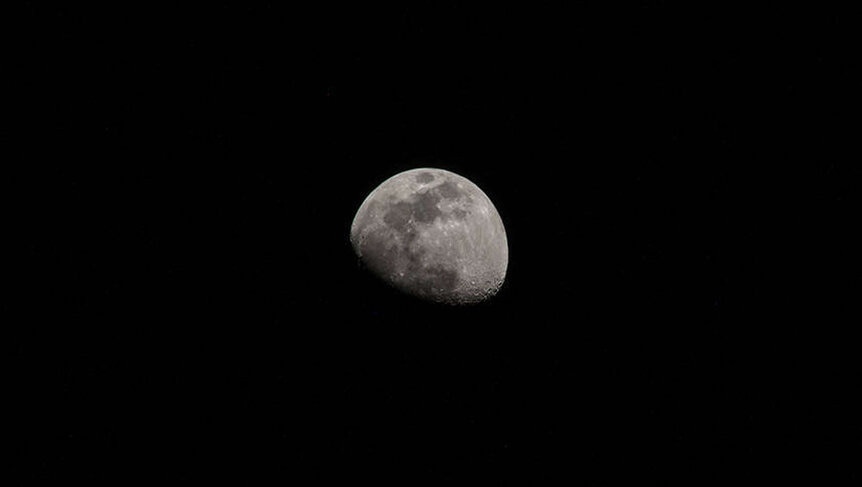Create a free profile to get unlimited access to exclusive videos, sweepstakes, and more!
Are there secrets from Venus on the Moon, and could they mean Venus once had life?

Venus is so inhospitable that even landers perished on its blistering surface. While NASA has prospects for sending astronauts into its thick sulfuric atmosphere, that won’t be happening anytime soon, but there is another way of finding out whether this toxic wasteland was once a possibly fertile planet.
The one place humans will be landing soon is the Moon. Billions of years ago, when planets and other objects in what is now our solar system were constantly crashing into each other, Venus could have been gouged by asteroids that then head-butted the Moon. Our planet could have also gotten pelted by Venusian rubble. The problem is that whatever landed on Earth is probably buried extremely deep and has probably undergone changes over several billion years, but anything that the Moon might have been showered with has a chance of being pristine or close to it. At least that is what Yale astronomers Samuel Cabot and Gregory Laughlin now believe.
“Finding a piece of Venus would be a dramatic development for the field," Cabot, who co-authored a study with Laughlin that was recently published in Earth and Planetary Astrophysics, told SYFY WIRE. "It would be the most compelling evidence that it had a thin atmosphere, and would allow us to start investigating whether it had liquid water on its surface, and also the timeline for when Venus’ atmosphere changed to its present state."
Running a series of computer simulations showed how likely it was that there might be shards of Venus on the Moon. The astronomers explored whether it was possible that collisions between Venus and random objects could have either smashed into Venus and then the Moon, or asteroids and maybe comets bombarded Venus and scattered pieces of the planet far enough to settle on to the lunar surface.
“We simulated three scenarios to explore different types of impacts that would launch material from Venus into orbit around the Sun,” Cabot said. “Faster impacts eject more material with higher energy. We looked at different reasonable speeds at which an asteroid or comet would strike Venus."
Martian meterorites have been found on Earth, so it is likely material from Venus is buried somewhere beyond our reach. The Moon is close enough for asteroids to have been within the zone where material from those collisions could fall. Cabot cannot yet say for sure how deep we should expect to probe for it.
"If there is any ejecta from Venus on the Moon, how deep it is depends on when Venus lost its atmosphere," he said. "The later this happened, the more shallow the region we would have to look, possibly as little as several meters."
Without Earth’s atmosphere and geological processes, such pieces might still retain evidence that could finally tell us whether Venus was at least habitable, if not a hotbed of life that died around after Jupiter supposedly pushed it into the orbit that made it the inferno that is now. The extreme greenhouse effect that ultimately doomed Venus could also tell us more about whether the greenhouse gas emissions on Earth could mean a similar fate for us.
Another thing that makes finding Venus dust on the moon likely is that faster impacts release more junk into space. Asteroids are thought to have hit Venus with 24 percent faster speed than they hit Earth before Venus’ atmosphere thickened so much that atmospheric drag would have slowed them down.
What scientists will have to search for are certain elements and isotopes that will give away whether something in the lunar regolith originally came from Venus. Some elements metamorphose and decompose easily from shock. Depending on how heavily the rock is shocked from impact, it may be much more difficult to figure out what primordial Venus was like (especially its water content), and its origin may end up being impossible to identify.
"We tried to focus on rocks that undergo the least amount of shock damage. An asteroid or comet impact ejects much more material than we investigated and simulated, but we stuck to the quantity of rock that experiences the least amount of pressure," explained Cabot. "There are some very interesting physics that allow a small amount of rocks to be ejected but minimally damaged, which explains the condition of some Martian meteorites found on Earth. This goes for different types of rocks, but zircon grains are particularly robust to pressure damage."
Venusian ejecta is expected to include igneous rocks like basalt, andesite, and granite. Zircon is rare in basalts but can be found in some forms of granite. It is also known to be a time capsule that has revealed glimpses of early Earth — and the same could go for Venus.
So we might not even have to go to Venus to find out whether it was an earthlike planet, as many scientists suspect. That will probably be a relief for space agencies everywhere, because good luck designing a human-safe spacecraft that can take the heat.



























